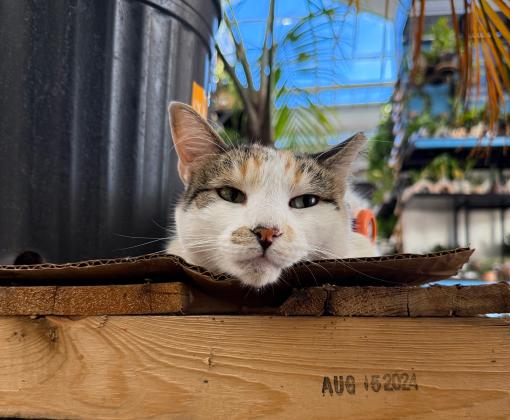
How to Prevent Cat Behavior Problems
A new kitten will provide you with hours of entertainment and fun, but your cute kitten will soon turn into an adult cat. Behavior issues are one of the most common reasons that adult cats are relinquished to shelters, and these cats are much less likely than kittens to find new homes. Some common cat behavior problems include inappropriate elimination and aggression. Certain normal cat behaviors, such as scratching, can also become unacceptable to many of us when they are done in extremes.
To ensure a long and pleasurable relationship with your cat, there are several steps you can take to prevent cat behavior problems from happening.
Expose your kitten to different experiences
Kittens are better able than adult cats to adapt to environmental changes. If you expose your kitten to anything and everything they might come in contact with as an adult, you will have a much lower chance of ending up with a fearful cat. Kittens should be introduced to different ages, sizes, and types of people; a cat carrier; the vacuum cleaner; other animals; and different environments.
Strive to make these exposures positive experiences; teach your kitten that all these strange new things are nothing to be afraid of. Associate these experiences with things your kitty likes, such as playtime or food treats. For example, place a special cat treat or a small bowl of moist cat food in your kitten's carrier several times a week. This experience will increase the likelihood that the kitten will readily enter the carrier as an adult.
Enrich your kitten's life
Cats can get bored if they don’t have fun and stimulating things to do, and boredom can lead to behavior issues. Luckily, there are lots of ways that you can provide your cat with enrichment. Try out interactive toys, such as wand toys, with your cat, along with other toys and food puzzles. Rotate which toys are available to keep things exciting for your kitten and make old toys feel like new again.

See how your community is doing
Also, maximize vertical space for your cat to explore with cat trees and shelving. A window perch can provide your cat with lots of entertainment. Plus, consider constructing a catio for your cat to safely experience the outdoors, and teach your cat to walk on a leash and harness.
Teach your kitten to scratch in appropriate places
Scratching is a natural cat behavior; cats scratch to refresh and sharpen their claws. Teaching your kitten to scratch in appropriate places and to accept nail trimming can help prevent damage to your furniture.
Buy several scratching surfaces or scratching posts, and place them in several prominent areas of the house. Place containers of special treats in the rooms with the scratching posts. When your kitten scratches on the post, offer praise and a treat reward. To reinforce the message, you can also pet the kitten while they're at the scratching post; stroking the kitten's back will encourage them to knead their paws. If necessary, you can move the scratching posts to a more convenient location after the kitten has been using them regularly.
Keep the litter box very clean
Cats tend to be fastidious, so keeping the litter box clean decreases the likelihood that your kitty will urinate or defecate outside the box as an adult. Scoop the box as many times a day as possible, and empty and scrub it every two weeks, refilling it to a depth of three inches.
Teach your kitten to play nicely
Teaching a kitten proper play skills and playing with them every day not only will give your kitten appropriate outlets for their energy, but it also can help them become a well-mannered adult. To decrease the chance that they will seek out human hands and feet as play toys, don’t ever play with a kitten with your hands and feet. In your kitten’s mind, a playful nip is indistinguishable from a painful bite. They won't understand that it’s not OK to chew on or bite people unless you teach them to only bite appropriate objects.
If your kitten plays with your hands or feet, make your hand or foot go limp (kittens are more likely to continue attacking a moving object) and say “Ouch!” in a loud voice. Then, pull out an interactive toy, such as a feather attached to a wand, and play with the kitten vigorously. You are teaching your kitten that hands are no fun to play with, but interactive toys are great fun because they are a challenge.
Teach your cat a few basic cues
Some people believe that cats are untrainable, but cats are very smart and can quickly learn cues and tricks if they are taught using reward-based methods. Many people use clicker training to teach their cats cues and tricks. The earlier you start teaching your kitten, the more quickly they will learn. Training is a great way to provide your cat with both mental and physical exercise and improve your relationship, too.
Remember, it is much easier to prevent cat behavior problems than to treat them after they’ve become entrenched. If your kitty ever does develop an unwanted behavior, seek help from your local shelter or rescue group, your veterinarian, or a cat behaviorist. An experienced behaviorist can often give specific recommendations for you and your cat.
